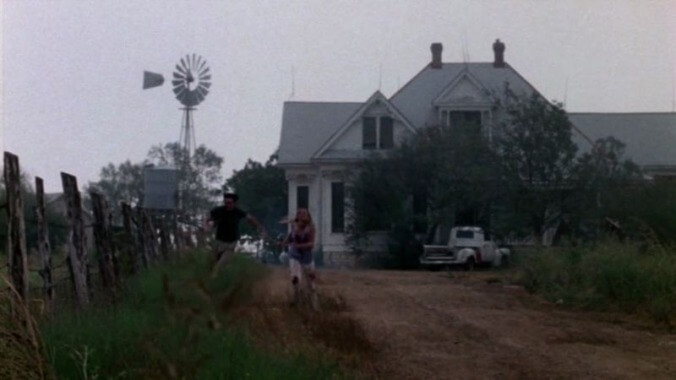Austin: The Texas Chain Saw... family restaurant?
People typically chuckle when they hear the Texas Chain Saw Massacre house is now a restaurant, and with good reason: The site of one of the most grotesque, unnerving dinner scenes in horror-movie history now serves up (non-human) meat in a dining room that’s homey, not horrifying. Well, not everyone chuckles: As owner Jeremy Lee explains in this episode of Pop Pilgrims, he receives the occasional e-mail from people who think the house was the site of actual murders.
Those people are mistaken, but not necessarily crazy; the text underneath the title on the original movie poster certainly hinted at reality—“What happened is true. Now the motion picture that’s just as real”—and elements of Leatherface’s character were inspired by real-life serial killer Ed Gein. At the top of texaschainsawmassacre.net—the comprehensive fan site run by Pop Pilgrims guest Tim Harden—there’s a giant link at the top of the home page saying “DID THE TEXAS CHAINSAW MASSACRE REALLY HAPPEN? Click HERE to find out!” The link leads to a page with a long explanation best summarized by the word “No.”
Regardless, it’s a little silly to believe The Texas Chain Saw Massacre was real. The house from the movie that caused so much controversy upon the film’s release four decades ago is a local landmark in Kingsland, Texas, about an hour northwest of Austin. There’s a plaque out front, and a life-sized Leatherface mannequin in Junction House’s upstairs bar (along with a pack of Texas Chain Saw Massacre chili mix). While The A.V. Club was shooting in the building, a group of senior women said in chipper voices, “Oh, you must be here for The Texas Chain Saw Massacre!”

